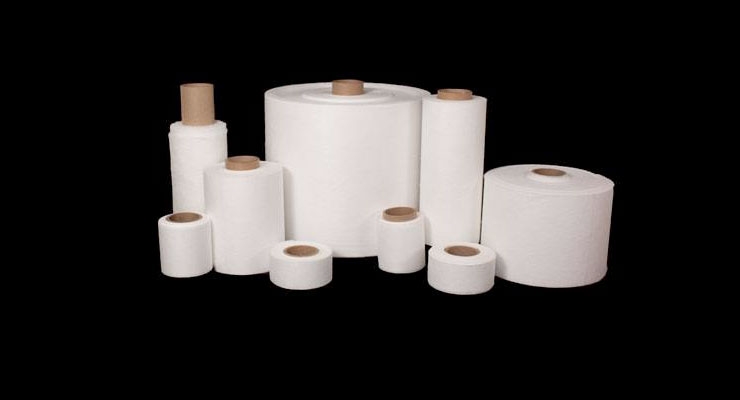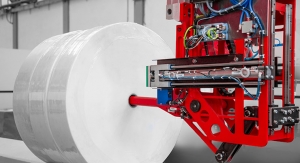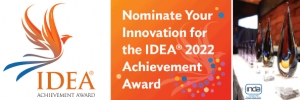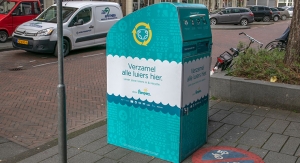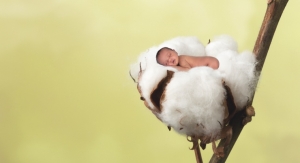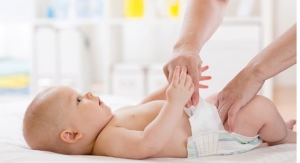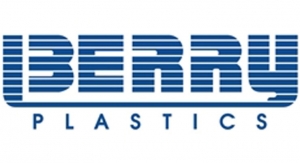Kerem Durdag, Biovation05.05.15
The diverse world of nonwoven product manufacturing has become even more varied, with a new focus on using sustainable biopolymers such as polylactic acid (PLA) to address specific market demands at an affordable price. Concurrently, processes such as spunbond manufacturing used by global leaders such as Fitesa, Ahlstrom and Fiberweb/PGI have enabled scalable commercialization of specific nonwoven materials for the global marketplace. Spunbond’s near cousin, meltblown manufacturing, is proving itself to be a viable process in the nonwoven ecosystem, delivering cost-effective solutions that address niche opportunities in roll goods, healthcare, industrial and consumer applications. This article shines a spotlight on the first two of those sectors, where meltblown PLA nonwoven materials can play an important role in furthering the industry and driving innovation.
Meltblown PLA offers value-added benefits
Global commercialization efforts by NatureWorks with its Ingeo resin platform have highlighted the advantages of PLA. This sustainable biopolymer comes from renewable sources; end-products can be manufactured from PLA to be degradable and biocompostable. It has a low bioburden compared with other materials such as recycled wood pulp. This low bioburden profile precludes any heat drying needed to destroy microbes, allowing a “cleaner” and less process-intensive manufacturing method than traditional alternatives such as wood pulp. Most importantly, particularly for healthcare applications, PLA has a very attractive biocompatibility profile and is resorbable and safe in terms of cytotoxicity versus synthetic fibers.

Photo courtesy of Biovation.
PLA is attractive on its own, but when used in the meltblown process it opens a niche for nonwoven materials. With fiber diameters that are lower than other processes, and an ability to combine with other materials such as laminated composites, it provides an accessible platform for innovation. Crystallization kinetics are different for PLA nonwovens when compared to petroleum-based polymers due to the processing parameters of higher pressure and extrusion temperatures within controlled process windows. However, the primary learning curve by industry leaders has been accomplished.
PLA, using a careful and controlled approach, can be thermally glazed – a process known as “calendering.” Calendering and even exposure to blasts of hot air can render the nonwoven filaments with a smooth film-like surface that still has porosity to fluids and moisture. If done correctly, it is possible to render the nonwoven PLA material so that it behaves as a surface film with specific tensile properties. Smooth glazed PLA fibrous surface looks like the commercial product Tyvek, but has very different mechanical properties. Porosity can be controlled by adjusting the heat used to calendar the material and by using an engraving roll that can place apertures on the film (together with PLA fiber diameters, density and loft). Glazing can be an overall surface treatment or a variable/zone application. The calendering process eliminates the need for a separate film and minimizes the need for additional lamination and processing efforts.
PLA’s characteristics can be further modified with co-polymers, masterbatch additives and/or plasticizers, lubricants and other processing aids. Advantages include smooth surface texture and a circular cross-section of fibers, providing a high surface area with moderate tensile strength for soft and robust characteristics. Additives offered by companies including Techmere and Polyvel offer a suite of possibilities for investigation and implementation. Other co-polymers can impart supplementary characteristics, such as polycaprolactone, a degradable polymer often used in medical implants, which improves flexibility to counteract the sometimes brittle nature of the PLA. Metabolix offers Mirel polyhydroxyalkanoates (PHAs) as performance additives, which can be extruded into fiber via the meltblown process and when integrated as co-polymer then render specific properties to the non-woven material. Metabolix reports that its proprietary platform enables the creation of specialty biopolymers used in a range of applications such as construction and packaging materials, as well as industrial, consumer and personal care products.
Antimicrobials Add Value
Another benefit of PLA is the ability to incorporate antimicrobial and antifungal agents into the actual fibers of the nonwoven. Agents can be added to the meltblown fiber at various stages of the manufacturing process to not only yield a cost-effective product but also one that has the requisite efficacy. The agents can be dipped, sprayed or deposition coated to intersperse the antimicrobial and antifungal agents between the fibers. Specifically selected antimicrobial agents can be non-leaching, multi-component for a specific efficacy profile or disbursed on-demand with controlled release to ensure performance over the entire lifecycle of the end product.
The list of antimicrobials is vast so nonwoven manufacturers have many options for adding value to their materials. For example, silver

Photo courtesy of Biovation.
ion-based agents include compounds that contain silver as part of the structure that can be covalently bound, ionically bound or bound by other mechanisms known as “charge-transfer” complexes, including clathrate compounds that involve silver or silver species as part of the structure. Silver ion-based agents also include silver or silver-containing species that exist as a result of the process of sorption, either chemical or physical. To enable absorption or adsorption, the sorptive surface can be a molecule, polymer, organic or inorganic entity. These characteristics naturally lend it to healthcare applications such as advanced woundcare dressings.
Non-silver and non-silver ion-based agents are, but are not limited to, compounds containing zinc, copper, titanium, magnesium, quaternary ammonium, silane (alkyltrialkoxysilanes), cadmium, mercury, biguanides, amines, glucoprotamine, chitosan, trichlocarbon and triclosan. Depending on the end application, which ranges from disinfectant wipes to sporting goods, these agents afford an attractive cost-benefit ratio for manufacturers.
With this range of possibilities, PLA meltblown nonwoven materials with specific physical and chemical properties afford an innovative approach to current and new markets.
Roll Goods
An example of a chemistry-based roll good manufactured from meltblown PLA is the Selectrocide sachet from Selective Micro Technologies (SMT). This company develops numerous products for healthcare and food safety, including sachets that wrap a measured amount of dry chlorine dioxide chemistry with a nonwoven roll good. End users simply drop them into water to create a sanitizing solution with specific concentrations to disinfect healthcare and food prep environments so the roll must have predictable porosity. Because the sachets are shipped and stored in hot and humid environments, they also need to be shelf stable. The company’s customers indicated they would prefer a product made from a sustainable biopolymer.
The company worked closely with Biovation, which conducted extensive experiments on its meltblown nonwoven manufacturing line and tested different grades of PLA. Biovation also fine-tuned its processes so that the final material would work on SMT’s converting and packaging manufacturing lines, including during the heat-sealing process. The end results was an all-PLA material that could run through the high-speed manufacturing line, could withstand heat required to create a robust seam without impacting the chemistry, and that was sized to fit the manufacturing line with no waste. (See Figure 1.)
Such collaborative approaches with the end customer mitigates risk while developing highly engineered, advanced all-PLA biopolymer roll goods that are durable, easy to use on production lines and are more economical than previously thought.
Niche Healthcare Products
One industry that is perhaps the most reliant on collaboration to mitigate risk and comply with numerous regulations is healthcare. With large global market dynamics, it is an attractive albeit challenging space for PLA nonwovens.
Within healthcare, the sub-market of infection control is a mature yet growing segment. Young companies such as MedTextra and PurThread are doing innovative work. Within infection control, barrier nonwoven materials have an established value, and, integrating active antimicrobial agents with nonwovens offers the next-generation opportunity. By integrating them in-situ as part of a singular manufacturing run, they can provide value-oriented FDA 510k Class 2 products that contribute to patient health and safety. Continued focus on reducing long-term healthcare costs combined with incentives offered to providers creates an intersection of nonwoven capability and market-adoption intent. Finally, with market dynamics forcing responsible disposable of medical waste, products that reduce the trash burden in landfills create a role for PLA meltblown material.
One example of the benefits of PLA meltblown in the healthcare market is Biovation’s BioArmour Blood Pressure Cuff Shield. This disposable, non-sterile protective liner is applied directly to any standard blood pressure cuff and is designed to last through a 24-hour period of multi-patient use. The skin-soft comfort dynamics were accomplished by integrating Ingeo PLA with Metabolix PHA to enable each polymer to showcase its maximum performance potential. Designed in collaboration with a hospital system, the product prevents direct contact of the patient’s skin with the blood pressure cuff and mitigates the propagation of pathogens by impregnating the nonwoven material with antimicrobial and antifungal agents. BioArmour provides hospitals and healthcare facilities with a proactive measure for infectious disease reduction and control in an easy-to-use biodegradable product. This cost-effective product (see Figure 2) is multi-patient, requires no staff maintenance or disinfection and is targeted for in-patient, physician offices, hospice and nursing home facilities as well as for emergency medical services.
The collaboration included the efficient integration of an antimicrobial silver-ion additive from Sciessent. Under its Medical Device Market Acceleration Program (MedMAPSM), Sciessent’s materials scientists, microbiologists and regulatory and marketing professionals helped the BioArmour product obtain Class I CE Mark clearances. Leveraging antimicrobials to reduce bacterial colonization and biofilm accumulation on surfaces has been proven to work. However, adding antimicrobial features to nonwoven medical devices is still viewed as a significant modification by regulatory bodies. This extra layer of complexity has hindered many nonwoven med-device manufacturers seeking regulatory approval. In response to this challenge, Sciessent created MedMAP to help manufacturers efficiently move antimicrobial-treated products from concept and development to regulatory approval and commercialization.
The BioArmour Blood Pressure Cuff Shield kills 99.99% of bacteria and fungi over a 24-hour period, when tested in vitro against single isolates including: MRSA, VRE, Staphylococcus aureus, Acinetobacter baumannii, Klebsiella pneumoniae, Pseudomonas aeruginosa, and Candida albicans. The product has been registered a CE Class I medical device marked for distribution in the EU and is currently undergoing testing for U.S. FDA 510(k) Class 2 medical device approval, which is anticipated to be received in late summer 2015.
Meltblown nonwoven PLA products co-exist within the large nonwovens ecosystem, and there is a large and growing role for them within niche solutions. As technologies and processing knowledge mature, PLA-based meltblown nonwovens will be part of the innovation stream driving growth and creating a new dynamic in the marketplace.
Kerem Durdag is CEO of Biovation, a technology design and manufacturing company that manufactures advanced nonwoven fiber products with integrated chemistries for packaging, healthcare, custom advanced material OEM products, and other specialty scalable applications. Biovation has extensive experience with green and sustainable biopolymers such as polylactic acid, which comes from cornstarch. Contact Durdag at kdurdag@biovation.com.
Meltblown PLA offers value-added benefits
Global commercialization efforts by NatureWorks with its Ingeo resin platform have highlighted the advantages of PLA. This sustainable biopolymer comes from renewable sources; end-products can be manufactured from PLA to be degradable and biocompostable. It has a low bioburden compared with other materials such as recycled wood pulp. This low bioburden profile precludes any heat drying needed to destroy microbes, allowing a “cleaner” and less process-intensive manufacturing method than traditional alternatives such as wood pulp. Most importantly, particularly for healthcare applications, PLA has a very attractive biocompatibility profile and is resorbable and safe in terms of cytotoxicity versus synthetic fibers.
Photo courtesy of Biovation.
PLA, using a careful and controlled approach, can be thermally glazed – a process known as “calendering.” Calendering and even exposure to blasts of hot air can render the nonwoven filaments with a smooth film-like surface that still has porosity to fluids and moisture. If done correctly, it is possible to render the nonwoven PLA material so that it behaves as a surface film with specific tensile properties. Smooth glazed PLA fibrous surface looks like the commercial product Tyvek, but has very different mechanical properties. Porosity can be controlled by adjusting the heat used to calendar the material and by using an engraving roll that can place apertures on the film (together with PLA fiber diameters, density and loft). Glazing can be an overall surface treatment or a variable/zone application. The calendering process eliminates the need for a separate film and minimizes the need for additional lamination and processing efforts.
PLA’s characteristics can be further modified with co-polymers, masterbatch additives and/or plasticizers, lubricants and other processing aids. Advantages include smooth surface texture and a circular cross-section of fibers, providing a high surface area with moderate tensile strength for soft and robust characteristics. Additives offered by companies including Techmere and Polyvel offer a suite of possibilities for investigation and implementation. Other co-polymers can impart supplementary characteristics, such as polycaprolactone, a degradable polymer often used in medical implants, which improves flexibility to counteract the sometimes brittle nature of the PLA. Metabolix offers Mirel polyhydroxyalkanoates (PHAs) as performance additives, which can be extruded into fiber via the meltblown process and when integrated as co-polymer then render specific properties to the non-woven material. Metabolix reports that its proprietary platform enables the creation of specialty biopolymers used in a range of applications such as construction and packaging materials, as well as industrial, consumer and personal care products.
Antimicrobials Add Value
Another benefit of PLA is the ability to incorporate antimicrobial and antifungal agents into the actual fibers of the nonwoven. Agents can be added to the meltblown fiber at various stages of the manufacturing process to not only yield a cost-effective product but also one that has the requisite efficacy. The agents can be dipped, sprayed or deposition coated to intersperse the antimicrobial and antifungal agents between the fibers. Specifically selected antimicrobial agents can be non-leaching, multi-component for a specific efficacy profile or disbursed on-demand with controlled release to ensure performance over the entire lifecycle of the end product.
The list of antimicrobials is vast so nonwoven manufacturers have many options for adding value to their materials. For example, silver
Photo courtesy of Biovation.
Non-silver and non-silver ion-based agents are, but are not limited to, compounds containing zinc, copper, titanium, magnesium, quaternary ammonium, silane (alkyltrialkoxysilanes), cadmium, mercury, biguanides, amines, glucoprotamine, chitosan, trichlocarbon and triclosan. Depending on the end application, which ranges from disinfectant wipes to sporting goods, these agents afford an attractive cost-benefit ratio for manufacturers.
With this range of possibilities, PLA meltblown nonwoven materials with specific physical and chemical properties afford an innovative approach to current and new markets.
Roll Goods
An example of a chemistry-based roll good manufactured from meltblown PLA is the Selectrocide sachet from Selective Micro Technologies (SMT). This company develops numerous products for healthcare and food safety, including sachets that wrap a measured amount of dry chlorine dioxide chemistry with a nonwoven roll good. End users simply drop them into water to create a sanitizing solution with specific concentrations to disinfect healthcare and food prep environments so the roll must have predictable porosity. Because the sachets are shipped and stored in hot and humid environments, they also need to be shelf stable. The company’s customers indicated they would prefer a product made from a sustainable biopolymer.
The company worked closely with Biovation, which conducted extensive experiments on its meltblown nonwoven manufacturing line and tested different grades of PLA. Biovation also fine-tuned its processes so that the final material would work on SMT’s converting and packaging manufacturing lines, including during the heat-sealing process. The end results was an all-PLA material that could run through the high-speed manufacturing line, could withstand heat required to create a robust seam without impacting the chemistry, and that was sized to fit the manufacturing line with no waste. (See Figure 1.)
Such collaborative approaches with the end customer mitigates risk while developing highly engineered, advanced all-PLA biopolymer roll goods that are durable, easy to use on production lines and are more economical than previously thought.
Niche Healthcare Products
One industry that is perhaps the most reliant on collaboration to mitigate risk and comply with numerous regulations is healthcare. With large global market dynamics, it is an attractive albeit challenging space for PLA nonwovens.
Within healthcare, the sub-market of infection control is a mature yet growing segment. Young companies such as MedTextra and PurThread are doing innovative work. Within infection control, barrier nonwoven materials have an established value, and, integrating active antimicrobial agents with nonwovens offers the next-generation opportunity. By integrating them in-situ as part of a singular manufacturing run, they can provide value-oriented FDA 510k Class 2 products that contribute to patient health and safety. Continued focus on reducing long-term healthcare costs combined with incentives offered to providers creates an intersection of nonwoven capability and market-adoption intent. Finally, with market dynamics forcing responsible disposable of medical waste, products that reduce the trash burden in landfills create a role for PLA meltblown material.
One example of the benefits of PLA meltblown in the healthcare market is Biovation’s BioArmour Blood Pressure Cuff Shield. This disposable, non-sterile protective liner is applied directly to any standard blood pressure cuff and is designed to last through a 24-hour period of multi-patient use. The skin-soft comfort dynamics were accomplished by integrating Ingeo PLA with Metabolix PHA to enable each polymer to showcase its maximum performance potential. Designed in collaboration with a hospital system, the product prevents direct contact of the patient’s skin with the blood pressure cuff and mitigates the propagation of pathogens by impregnating the nonwoven material with antimicrobial and antifungal agents. BioArmour provides hospitals and healthcare facilities with a proactive measure for infectious disease reduction and control in an easy-to-use biodegradable product. This cost-effective product (see Figure 2) is multi-patient, requires no staff maintenance or disinfection and is targeted for in-patient, physician offices, hospice and nursing home facilities as well as for emergency medical services.
The collaboration included the efficient integration of an antimicrobial silver-ion additive from Sciessent. Under its Medical Device Market Acceleration Program (MedMAPSM), Sciessent’s materials scientists, microbiologists and regulatory and marketing professionals helped the BioArmour product obtain Class I CE Mark clearances. Leveraging antimicrobials to reduce bacterial colonization and biofilm accumulation on surfaces has been proven to work. However, adding antimicrobial features to nonwoven medical devices is still viewed as a significant modification by regulatory bodies. This extra layer of complexity has hindered many nonwoven med-device manufacturers seeking regulatory approval. In response to this challenge, Sciessent created MedMAP to help manufacturers efficiently move antimicrobial-treated products from concept and development to regulatory approval and commercialization.
The BioArmour Blood Pressure Cuff Shield kills 99.99% of bacteria and fungi over a 24-hour period, when tested in vitro against single isolates including: MRSA, VRE, Staphylococcus aureus, Acinetobacter baumannii, Klebsiella pneumoniae, Pseudomonas aeruginosa, and Candida albicans. The product has been registered a CE Class I medical device marked for distribution in the EU and is currently undergoing testing for U.S. FDA 510(k) Class 2 medical device approval, which is anticipated to be received in late summer 2015.
Meltblown nonwoven PLA products co-exist within the large nonwovens ecosystem, and there is a large and growing role for them within niche solutions. As technologies and processing knowledge mature, PLA-based meltblown nonwovens will be part of the innovation stream driving growth and creating a new dynamic in the marketplace.
Kerem Durdag is CEO of Biovation, a technology design and manufacturing company that manufactures advanced nonwoven fiber products with integrated chemistries for packaging, healthcare, custom advanced material OEM products, and other specialty scalable applications. Biovation has extensive experience with green and sustainable biopolymers such as polylactic acid, which comes from cornstarch. Contact Durdag at kdurdag@biovation.com.

